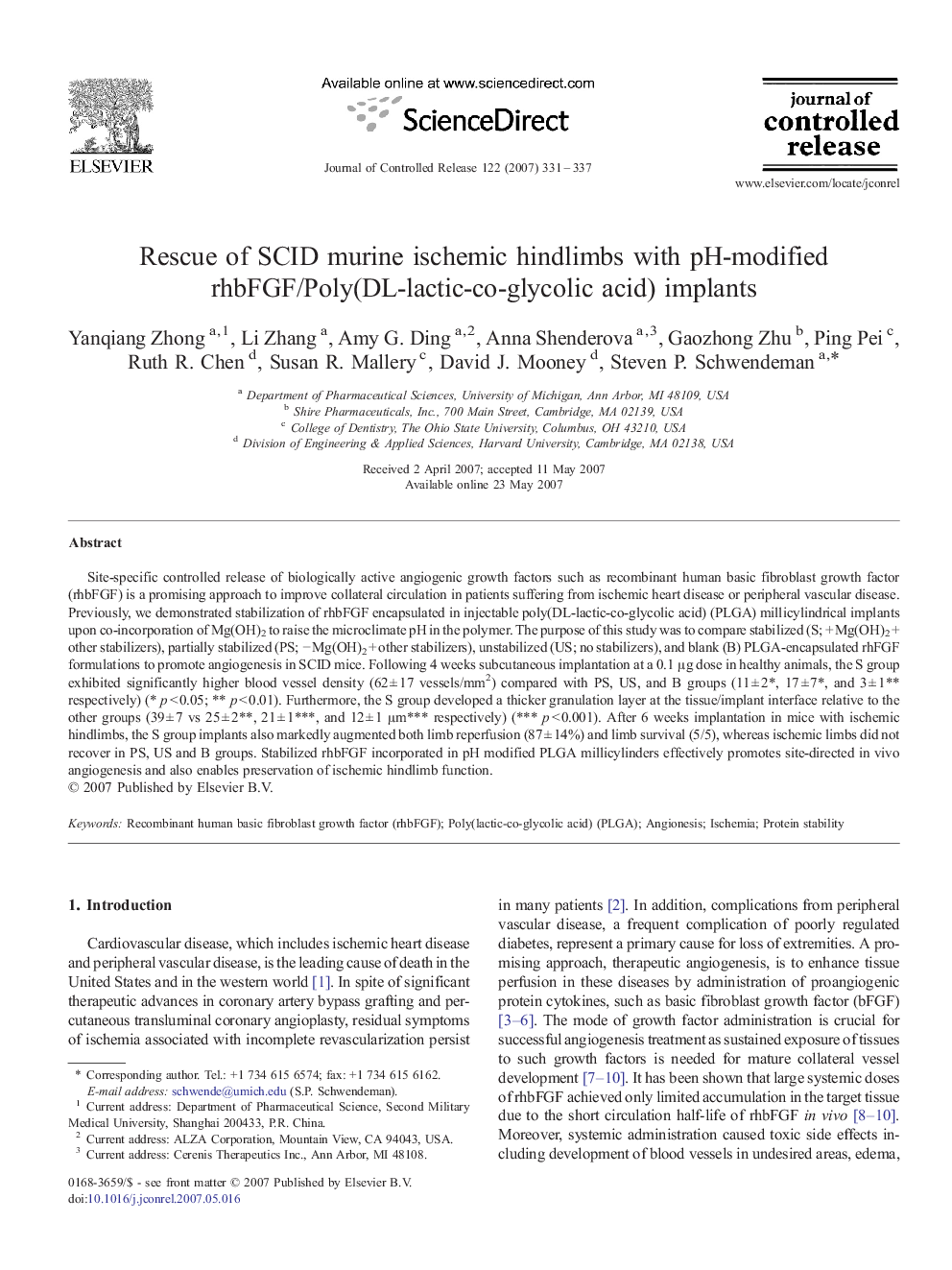| کد مقاله | کد نشریه | سال انتشار | مقاله انگلیسی | نسخه تمام متن |
|---|---|---|---|---|
| 1427121 | 986848 | 2007 | 7 صفحه PDF | دانلود رایگان |
عنوان انگلیسی مقاله ISI
Rescue of SCID murine ischemic hindlimbs with pH-modified rhbFGF/Poly(DL-lactic-co-glycolic acid) implants
دانلود مقاله + سفارش ترجمه
دانلود مقاله ISI انگلیسی
رایگان برای ایرانیان
کلمات کلیدی
موضوعات مرتبط
مهندسی و علوم پایه
مهندسی مواد
بیومتریال
پیش نمایش صفحه اول مقاله

چکیده انگلیسی
Site-specific controlled release of biologically active angiogenic growth factors such as recombinant human basic fibroblast growth factor (rhbFGF) is a promising approach to improve collateral circulation in patients suffering from ischemic heart disease or peripheral vascular disease. Previously, we demonstrated stabilization of rhbFGF encapsulated in injectable poly(DL-lactic-co-glycolic acid) (PLGA) millicylindrical implants upon co-incorporation of Mg(OH)2 to raise the microclimate pH in the polymer. The purpose of this study was to compare stabilized (S; + Mg(OH)2 +other stabilizers), partially stabilized (PS; â Mg(OH)2 + other stabilizers), unstabilized (US; no stabilizers), and blank (B) PLGA-encapsulated rhFGF formulations to promote angiogenesis in SCID mice. Following 4 weeks subcutaneous implantation at a 0.1 μg dose in healthy animals, the S group exhibited significantly higher blood vessel density (62 ± 17 vessels/mm2) compared with PS, US, and B groups (11 ± 2â, 17 ± 7â, and 3 ± 1ââ respectively) (âp < 0.05; ââp < 0.01). Furthermore, the S group developed a thicker granulation layer at the tissue/implant interface relative to the other groups (39 ± 7 vs 25 ± 2ââ, 21 ± 1âââ, and 12 ± 1 μmâââ respectively) (âââp < 0.001). After 6 weeks implantation in mice with ischemic hindlimbs, the S group implants also markedly augmented both limb reperfusion (87 ± 14%) and limb survival (5/5), whereas ischemic limbs did not recover in PS, US and B groups. Stabilized rhbFGF incorporated in pH modified PLGA millicylinders effectively promotes site-directed in vivo angiogenesis and also enables preservation of ischemic hindlimb function.
ناشر
Database: Elsevier - ScienceDirect (ساینس دایرکت)
Journal: Journal of Controlled Release - Volume 122, Issue 3, 8 October 2007, Pages 331-337
Journal: Journal of Controlled Release - Volume 122, Issue 3, 8 October 2007, Pages 331-337
نویسندگان
Yanqiang Zhong, Li Zhang, Amy G. Ding, Anna Shenderova, Gaozhong Zhu, Ping Pei, Ruth R. Chen, Susan R. Mallery, David J. Mooney, Steven P. Schwendeman,